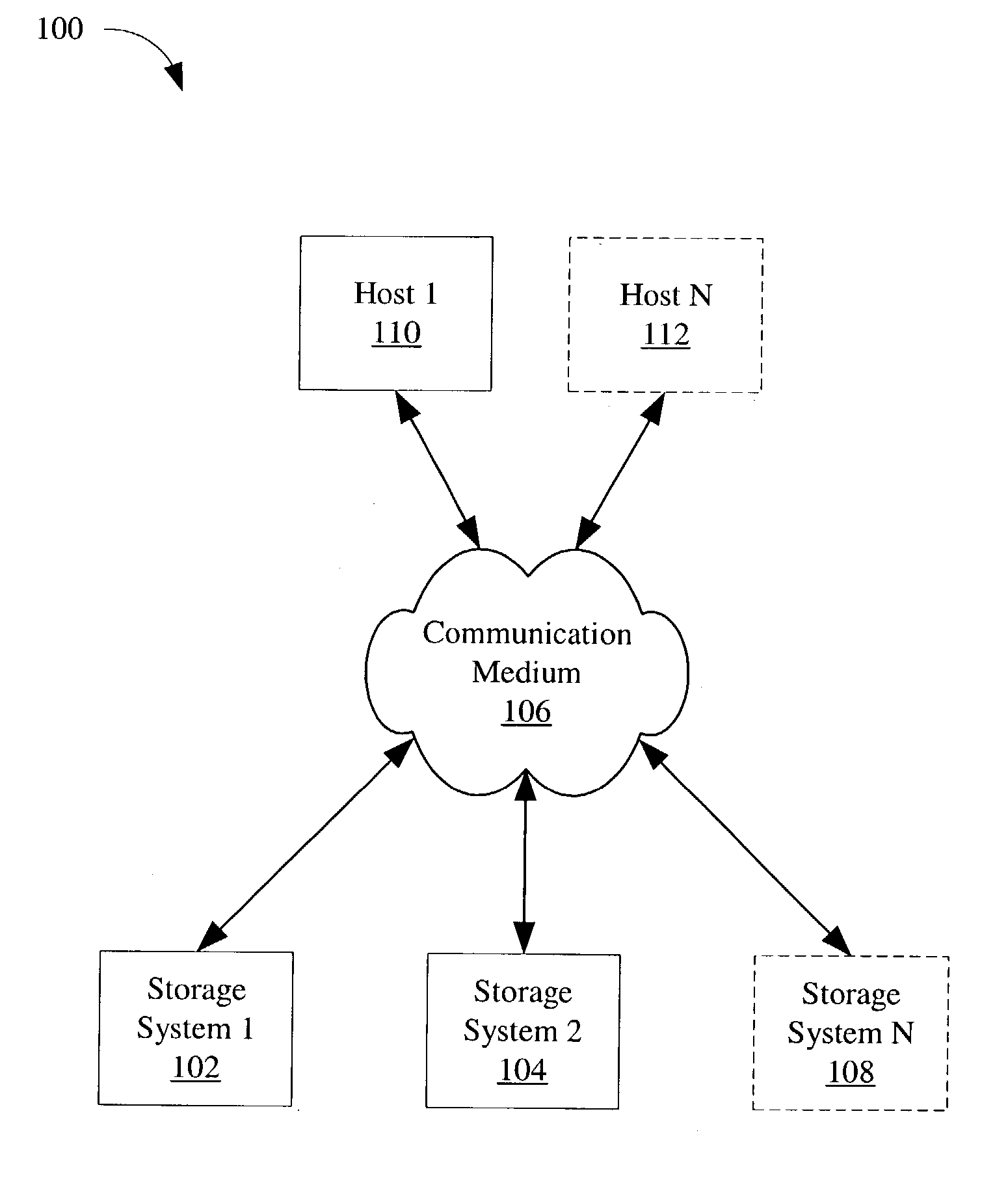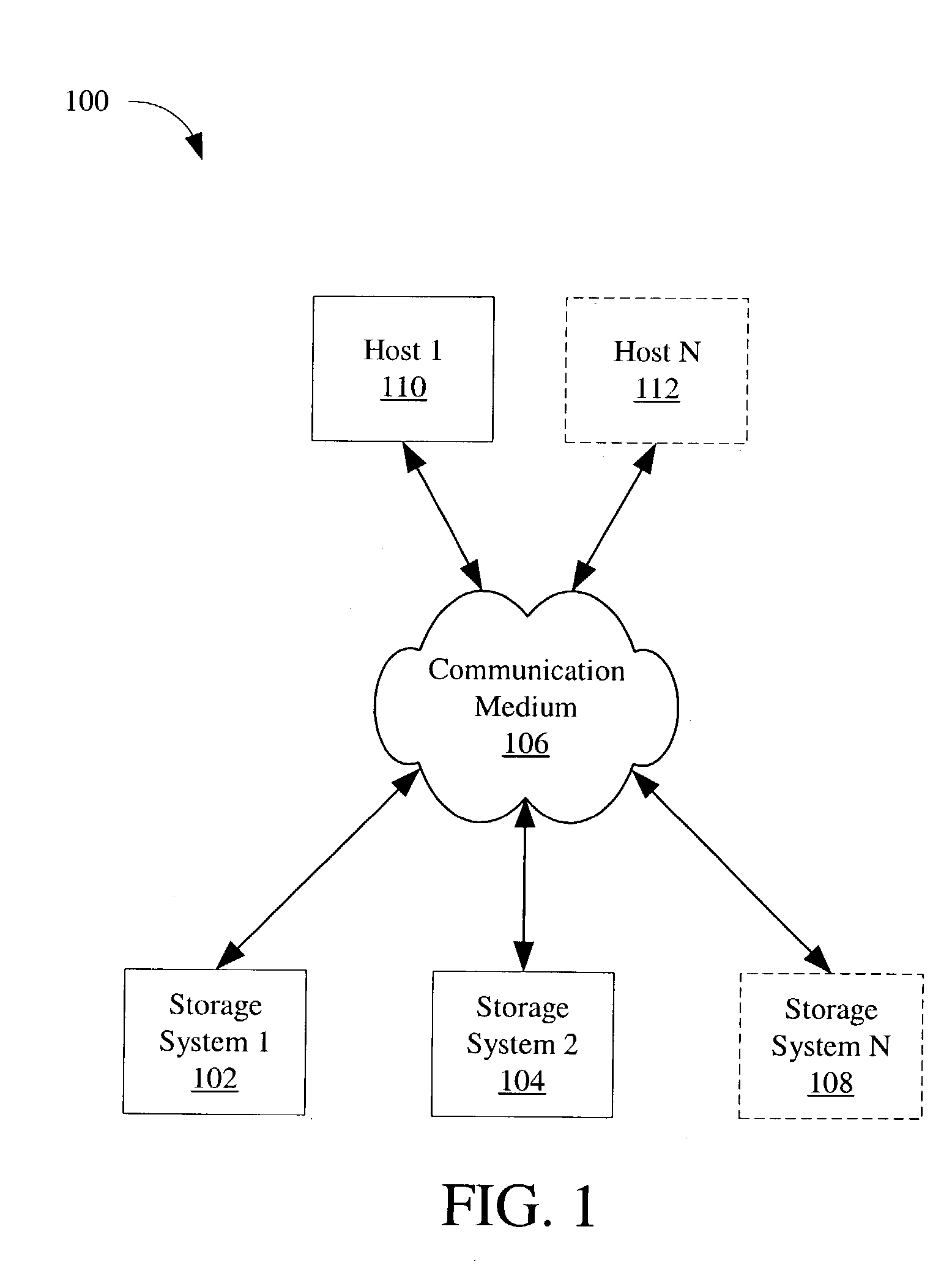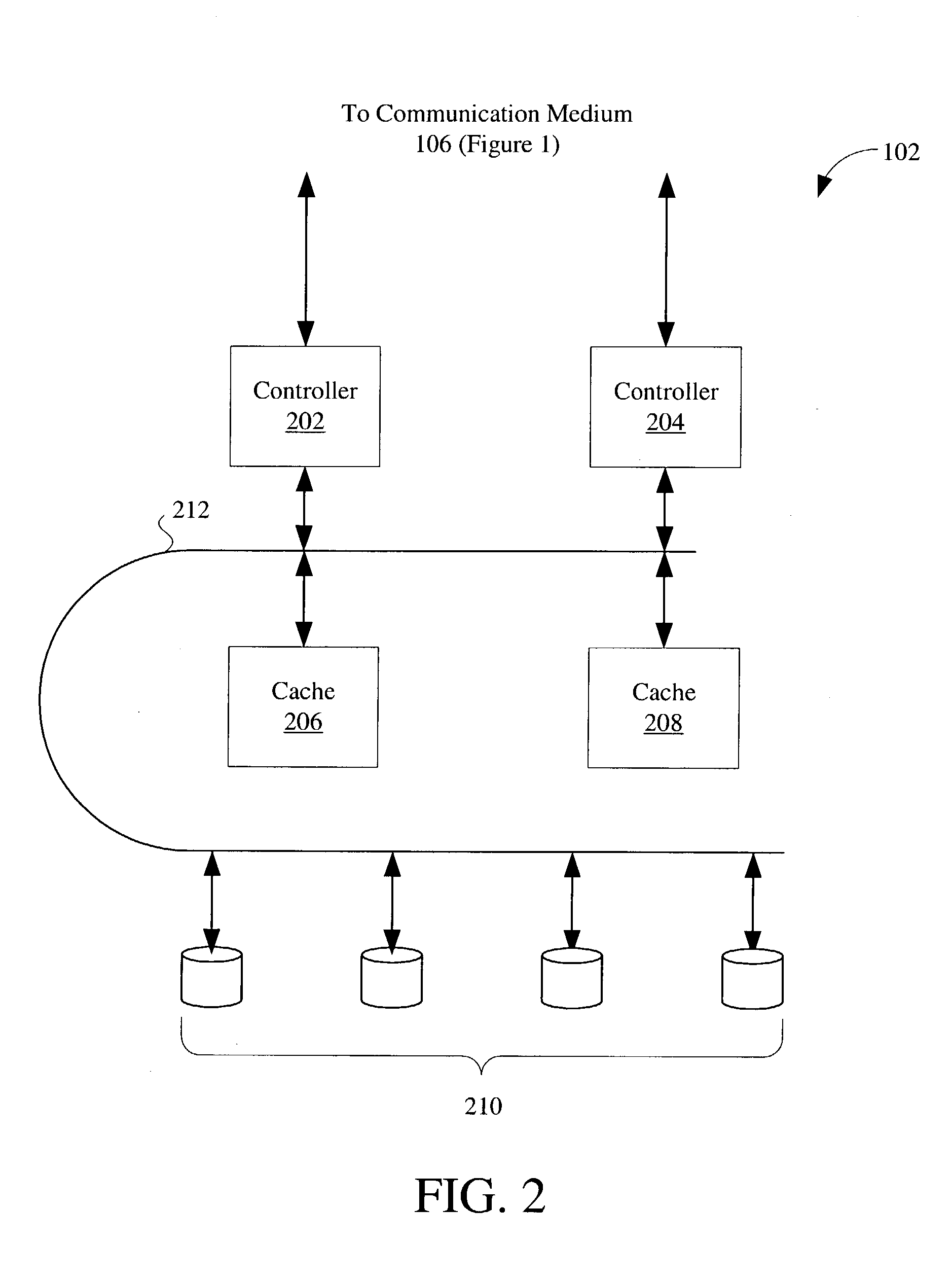Data redundancy for writes using remote storage system cache memory
a remote storage system and write technology, applied in memory systems, redundant hardware error correction, instruments, etc., can solve problems such as reducing the rate at which the data storage system is able to process requests, permanent loss of data in cache memory, and affecting the remaining cache memory
- Summary
- Abstract
- Description
- Claims
- Application Information
AI Technical Summary
Problems solved by technology
Method used
Image
Examples
Embodiment Construction
[0017] The present invention provides a technique for using a remote storage system cache memory for data redundancy. A computer system includes a first storage system that has a cache memory and mass storage (e.g., a disk drive). Data to be written to the mass storage is first stored in the cache memory. Data that is redundant to the data in the cache memory is stored elsewhere in the computer system in case the cache experiences a fault before the data can be written to the mass storage. Otherwise, any data stored in the cache memory that has not yet been written to the mass storage may be lost. In accordance with the invention, the first storage system is in communication with a second storage system which is typically located remotely from the first storage system. By "remotely" what is meant is that the storage systems preferably do not share common elements, though they may be physically located in proximity to each other, such as in a common machine room. However, the storage...
PUM
 Login to View More
Login to View More Abstract
Description
Claims
Application Information
 Login to View More
Login to View More - R&D
- Intellectual Property
- Life Sciences
- Materials
- Tech Scout
- Unparalleled Data Quality
- Higher Quality Content
- 60% Fewer Hallucinations
Browse by: Latest US Patents, China's latest patents, Technical Efficacy Thesaurus, Application Domain, Technology Topic, Popular Technical Reports.
© 2025 PatSnap. All rights reserved.Legal|Privacy policy|Modern Slavery Act Transparency Statement|Sitemap|About US| Contact US: help@patsnap.com



